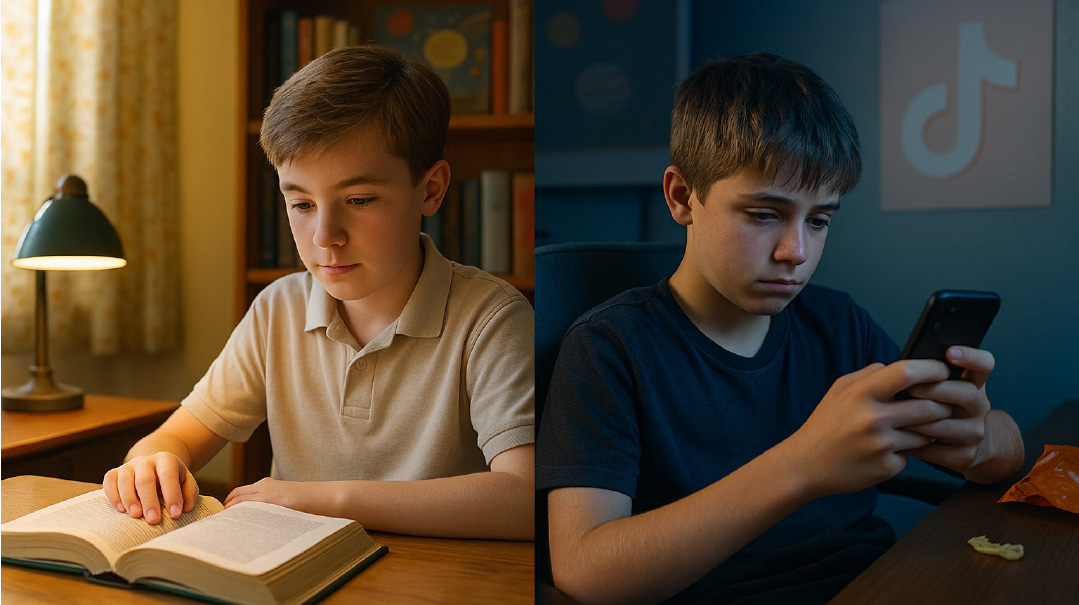Seeds Planted Long Ago

What astounds is how the seeds of American Jewry’s demise were planted long ago
The December 31 Jerusalem Post obituary of Professor Elihu Katz, who became the first director of Israel TV in 1967, sent me on a trip down memory lane.
In truth, I only encountered Katz once in my life, as a contributor to the 1964 Commentary symposium “Jewishness and the Younger Intellectuals.” But I remembered that his essay had stood out for me: He was the only contributor who expressed an interest in living in Israel, as well as the only contributor who wrote of a day school education and of being shomer Shabbos, at least through high school.
I decided to use his passing as the occasion to reread the symposium, after the passage of nearly two decades since the last time. Most of the contributors went on to distinguished careers in academia, or as writers or public intellectuals. And their essays were almost uniformly well written and intelligent. Ultimately, however, the collection is highly depressing, as it foretells the rapid descent of non-Orthodox American Jewry over the following sixty years. (The collection is dated only by the paucity of women contributors — two out of 31.)
The symposium appeared in the midst of a rapid building boom of suburban Conservative and Reform houses of worship. Yet as Martin Diamond, a professor of religion at Princeton, accurately perceived, that boom represented a revival of affiliation, not of religious faith.
The distinguished intellectuals were ahead of their time only in how little importance they attributed to Jewish religion and the thinness of their Jewish identity. For journalist Alfred Aronowitz, there was nothing “less important than being a Jew. Whether your fingernails are clean is more important.” Jason Epstein, one of the founders of the New York Review of Books, mentioned without embarrassment that he had only been in a synagogue three times in his life, including one wedding and one funeral. For all their general erudition, only one or two of the contributors showed more than a Sunday school knowledge of Bible stories.
With the doors of the elite universities now open to them, the young intellectuals had even less reason to think about their Jewishness than the preceding generation of New York intellectuals. Philosopher Judith Jarvis confessed that she was “rarely aware of my own Jewishness.” And novelist Richard Stern estimated that he spent no more than half an hour per year thinking about his Jewishness. He had no bar mitzvah because in his family such things were not done, and in college he told friends that he was only “half-Jewish” to avoid the solicitations of the campus Hillel. Ned Polsky, a political radical, refused to think of himself as a Jew, except in the “racist sense” of one born of Jewish parents.
As thin as their Jewish knowledge was, the contributors were, in the main, still willing to discuss their Jewish identity. As Jarvis observed sharply, “A Catholic who turns against his religion will hesitate before calling himself a Catholic in a way that a non-believing Jew will not.” What does Torah observance or knowledge have to do with being a Jew? she implied. Speaking for all the Jews she knew, she added, “We find it quite incredible that anyone should actively believe in a body of religious dogma.”
To the extent that the young intellectuals found anything positive in their Jewish inheritance, it was the Jews’ millennial status as a persecuted minority at the margins of every society in which they dwelt. That conformed to the intellectuals’ flattering self-image as standing apart from American society to better subject it to their withering critiques. The names Marx, Freud, and Einstein recur throughout the symposiasts’ responses, as some kind of holy trinity of Jews who overturned the existing order from their perch as outsiders. Martin Diamond spoke of “the peculiar insight of being on the margin of an alien society,” and Robert Jay Lifton of the “special identity of the cultural outsider.”
Maintaining that posture of permanent outsider became harder in the 1950s and 1960s, as all the doors to social acceptance opened to Jews. The 1964 symposium contributors were more likely to be the grandchildren of immigrants than children, and the majority attended Ivy League or other elite colleges, rather than CCNY, as had the previous generation of New York intellectuals. And it was often their parents who had rebelled against Jewish observance, long before they were born.
All this gave them a certain sense of inferiority vis-à-vis the more radical previous generation, the various Stalinists and Trotskyites and various splinter sects, whose often violent arguments raged in the CCNY library. The younger intellectuals’ contempt for midcentury suburban Jewry — its vulgarity, desire for acceptance, materialism, suburban temples modeled on mainstream Protestant churches, Hadassah ladies, all viciously satirized by the young Philip Roth — was itself a projection of their own sense of themselves as inferior to the previous generation of Jewish intellectuals.
A number of the contributors did mention positive qualities they attributed (without citation or argument) to traditional sources, most prominently the quest for social justice. Those qualities included an energetic positive acceptance of the world; “ethicalism,” the desire to reduce all situations to simple moral direction; a certain practical, meliorationist, answer-seeking tendency; behaving as humane individuals in a humane society.
But to the extent that these tendencies were positive, they had already been absorbed into Western civilization, and were no longer uniquely Jewish. Thus the same energetic acceptance of the world that English professor Irving Feldman attributed to traditional Jewish sources, he wrote, was also found in Henry David Thoreau and Mark Twain.
Long, long before “Nones — Jews of no religion” had become a category for sociologists of the Jewish community, many of the contributors were already there. That came through most clearly in their comments on how they would react to their children converting to another religion. A few said they were already happily married to “shiksahs,” so their children were not Jews anyway. Nat Hentoff described his ties to the Jewish community as so attenuated that his children could not convert “from anything.”
Most expressed amazement at the idea that their children, the children of atheists lacking any religious impulse might consider either becoming religious Jews or converting to another religion. English professor Robert Langbein candidly admitted that if his daughter brought home an Orthodox fiancé — with his disapproving look and unwillingness to eat with the family — it would be far more disruptive than if she intermarried.
Given their tenuous ties to Jewish religion, the young intellectuals showed scant attraction to any organized Jewish community. Philip Roth put the matter poignantly:
For myself, I cannot find a true and honest place in the history of believers that begins with Abraham, Isaac, and Jacob on the basis of the heroism of these believers, or of their humiliations and anguish. I can only connect with them, and with their descendants, as I apprehend their G-d. And until such time as I do apprehend Him, there will continue to exist between myself and those others who seek His presence, a question, sometimes spoken, sometimes not, which for all the pain and longing it may engender, for all the disappointment and bewilderment it may produce, cannot be swept away by nostalgia or sentimentality or even by a blind and valiant effort of the will: How are you connected to me as another man is not?
Even though Israel was still viewed by most Jews as the doughty David in 1964, the young intellectuals were already filled with ambivalence, and even outright hostility. Raziel Abelson, son of a Reform rabbi, could not forgive Israel for winning wars, and thereby losing the traditional Jewish role of nurturing universal justice through its suffering. He counseled Israel to sacrifice its own national interests on the altar world peace. Michael Maccoby, another son of a Reform rabbi, portrayed Israel as a bellicose, nationalistic country that had immorally treated its Arab population.
Less than twenty years after the end of the Holocaust, Judith Jarvis confidently proclaimed that there was no longer a need for a Jewish state, and Yale professor and poet John Hollander wrote of his distrust of any country founded on manifest destiny, theological or otherwise. Even those who felt a profound feeling of identification with Israel (Andrew Hacker), or were excited by the élan of the Sinai campaign (Joseph Kraft), were careful to add that they were also pro-Nasser.
Today, attitudes and ideas expressed by the young intellectuals in 1964 are commonplace among Jewish students, though rarely expressed so eloquently or with a touch of nostalgia for something lost. But what astounds is how the seeds of American Jewry’s demise were planted long ago.
(Originally featured in Mishpacha, Issue 895. Yonoson Rosenblum may be contacted directly at rosenblum@mishpacha.com)
Oops! We could not locate your form.







